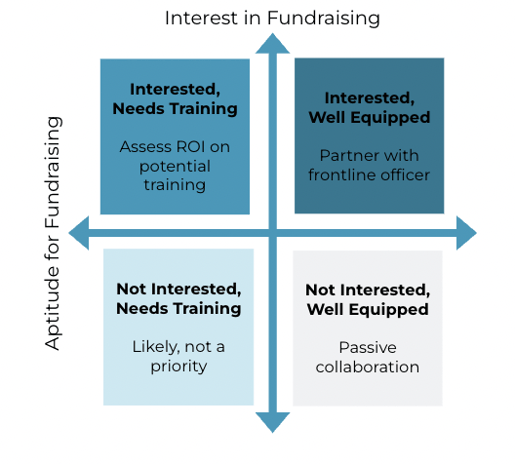Healthcare institutions rely on philanthropic dollars to help fund key initiatives, like providing seed funding for medical research and running support programs for patients and families. During this era of economic uncertainty, these organizations are looking for new avenues to raise funds and bolster patient engagement, leading to the increased popularity of grateful patient fundraising programs.
Windfall has worked with dozens of healthcare organizations with grateful patient programs and we’ve identified five steps to help accelerate your fundraising efforts by leveraging physicians in the process:
- Identify specific physicians and providers for partnership
- Make it easy for them to get involved in fundraising
- Provide physicians with fundraising training and support
- Make it meaningful
- Expand your outreach beyond physicians
1. Identify specific physicians and providers for partnership
Patients who have had a positive experience with a healthcare provider are often eager to give back or show their appreciation, and grateful patient fundraising programs provide them with this avenue. Physicians’ primary focus is caring for their patients and they may not have the time, inclination, or training to get involved in fundraising activities. It will be nearly impossible to partner with all of the physicians at your healthcare organization, so work to determine where you should focus your outreach efforts.
The matrix below offers a framework for making those decisions by looking at a potential provider partner’s aptitude for fundraising versus their interest in participating.The aim is to capitalize on those who are interested in partnering with frontline fundraisers and ensure that providers who partner with development teams are equipped to be productive collaborators.

2. Make it easy for them to get involved in fundraising
Rather than asking a physician to sift through hundreds of their recent patients, identify who is most likely to give to your organization using Net Worth and Windfall Propensity to Give Scores. This will help prioritize which patients to discuss in the limited facetime you are likely to have with the physician.
Suggestion: Physicians are busy people, so it's important to make it as turnkey as possible for them to get involved in fundraising. This might involve providing them with pre-written email scripts or letter templates that they can send to their patients introducing the development team.
3. Provide physicians with fundraising training and support
Many physicians may not be familiar with fundraising best practices, so it's important to provide them with training and support. Examples of support include hosting a training session or providing them with a toolkit that includes fundraising tips and resources. You can also identify your current physician fundraising champions and have them help by sharing their process or stories of their specific fundraising wins. Oftentimes, receiving training from their peers will have a greater impact than receiving it from a development team.
Similar to a gift officer’s relationship with donors, the relationship with physicians has to be managed to be successful. Make sure you have a strategy for how and when to engage with a physician. And don’t forget to steward your physicians! Their time is valuable - show them you care and appreciate their dedication to advancing medical care.
4. Make it meaningful
Physicians are more likely to get involved in fundraising if they feel that their efforts are making a meaningful impact. Share stories from grateful patients who have made philanthropic gifts to convey that giving can be part of a patient’s medical journey. Also, make sure the physicians understand how grateful patient contributions are helping your organization and patients. Providing regular updates and data on the impact of their fundraising efforts is key to keeping them engaged.
5. Expand your outreach beyond physicians
While these tips focus on physicians specifically, all healthcare professionals can be involved in grateful patient fundraising, including:
- Nurses
- Physician assistants
- Therapists
Anyone on a patient’s healthcare team may also have a strong relationship with the patient that could lead to a gift conversation!
However, ensure all healthcare teams understand that a patient’s time in the clinic should be 100 percent focused on their health. Unless the patient brings up fundraising in the clinic, this conversation should wait. The patient’s health is always the top priority.
Conclusion
To recap, grateful patient fundraising can be a powerful tool for healthcare organizations. When physicians and other healthcare professionals are fundraising allies, the results can be even more impactful. The five steps to successfully involving physicians in grateful patient programs are: (1) Identify specific physicians and providers for partnership, (2) Make it easy for them to get involved in fundraising, (3) Provide physicians with fundraising training and support, (4) Make it meaningful, and (5), Expand your outreach beyond physicians.
If you are still building out your grateful patient program, check out Windfall’s ebook on how to build a data-driven grateful patient program. To learn how Windfall’s solutions can power your healthcare fundraising, visit our Windfall for Healthcare Organizations page and contact us to continue the conversation.







